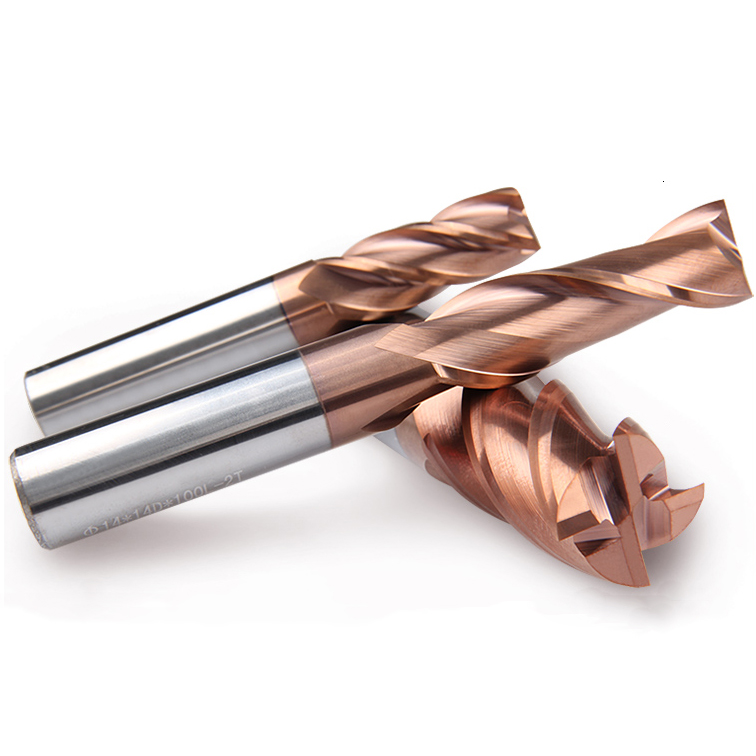Views: 90 Author: Site Editor Publish Time: 2024-01-16 Origin: Site

Chinese New Year is getting closer and closer, when the whole of China will be on holiday, so at this time we are doing a year-end sale. The discounts are the largest throughout the year.
Carbide end mills are used to cut materials that are difficult to machine. The "cemented carbide" in carbide end mills is an alloy made by sintering very hard metallic carbide powder with iron-based metal powder. It exhibits extreme hardness, with a longitudinal modulus of elasticity three times that of iron and an indentation hardness of approximately 90.
Carbide end mills are harder than HSS, the base material, allowing for high-speed cutting, and their inflexible and rigid nature makes them suitable for precision cutting. To use them correctly, it is essential to determine the appropriate machining process based on factors like the diameter and type of the carbide end mill and the material to be cut and machined.
Re-coating and polishing can extend the life of carbide end mills, making them a cost-effective choice despite the higher initial cost compared to HSS. Each piece may be more expensive, but the extended tool life results in lower overall costs.
Carbide end mills are cutting tools requiring high hardness and durability. Therefore, the material of cemented carbide end mills is a cemented carbide alloy consisting of extremely hard tungsten carbide (WC) fine particles bonded with cobalt (Co), which is both flexible and hard.
In the manufacturing process, tungsten carbide and cobalt powders are uniformly mixed in a powder mixer, then pressed into the shape of an end mill using a molding die. After that, they are sintered at a high temperature of 1300℃ or higher and completed by hot hydrostatic pressing (HIP) to remove internal defects such as gaps between the powders.
To further enhance wear and heat resistance, hard film coatings like titanium nitride (TiN) and titanium carbide (TiCN) are applied, extending service life. After a certain period of use, the coating thickness decreases, affecting its performance.
The hardness of carbide end mills depends on the amount of tungsten carbide and the particle size. A larger amount of tungsten carbide and smaller particle size result in higher hardness but increased brittleness, increasing the risk of chipping and cracking.
Hardness ranges from 900 HV to 1850 HV on the Vickers hardness scale, significantly higher than the maximum value of hardened steel at approximately 860 HV. This wide range allows for hardness selection based on the workpiece properties. Additionally, coating affects not only surface hardness but also heat resistance and chip evacuation properties, necessitating comprehensive judgment based on the carbide end mill's inherent hardness.
Tel: +86 153 8890 5800
E-mail: info@motontools.com
Head Office: A2320,Wanda Plaza,No.858 Dujuan Road,Changsha 410006,Hunan,China
Factory Address: A3 Plant,Xinmajingu Industrial Zone,Tianyuan District,Zhuzhou City,Hunan Province, 412007 CHINA